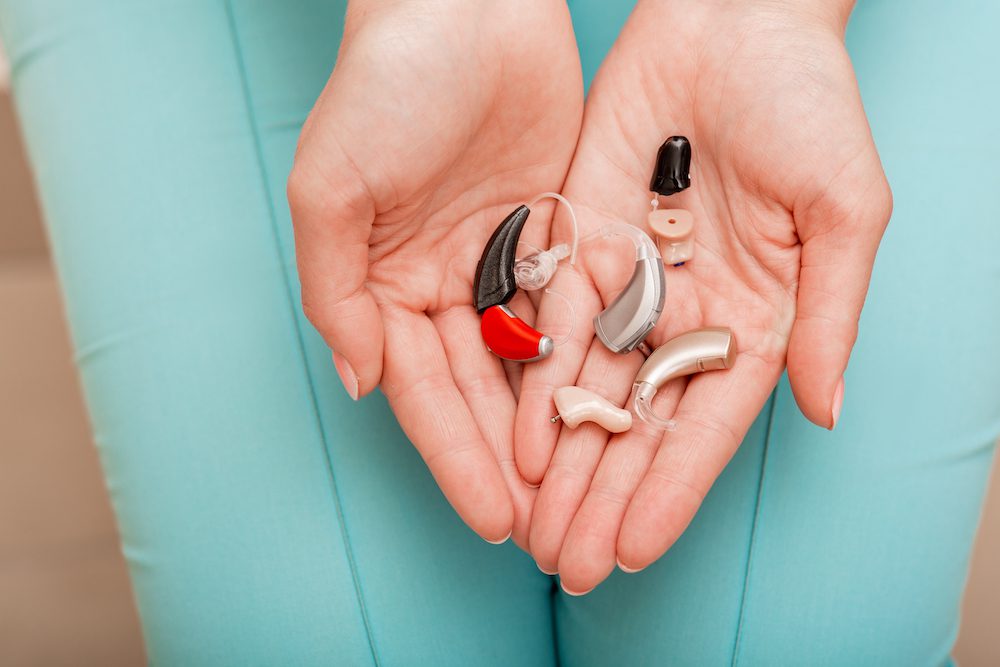
As many as 36-million Americans live with hearing loss, and that number will only increase as more people are diagnosed with noise-induced hearing loss due to an increase in industrial activity. The good news is that there are many ways to treat this condition, including using a hearing aid. Read on for information on which types of hearing aids are most popular today!
How Does a Hearing Aid Work?
To begin, it helps to understand how a hearing aid works. All hearing aids are equipped with microphones that pick-up sound waves and transform them into electrical signals, which can then be transmitted through wires or radio frequencies.
The signal then travels into an ear mold where it gets picked up by tiny hair cells in your inner ear – these hairs vibrate at different speeds depending on what you’re listening to. In turn, these vibrations get converted from mechanical energy into electrical impulses that travel along auditory nerves throughout the brain until they reach our primary auditory cortex, where we actually perceive sounds as noise!
Digital devices, however, use a process known as compression to solve this problem and ensure that your brain only receives clear signals from your earpiece.
Which are the Most Popular Types of Hearing Aids?
As there is such a wide range of different styles available on today’s market, it can be difficult for someone who has never used one before to know where to begin! However, if you’re looking for something discreet and effective, modern-day digital behind-the-ear devices may just be what you need. They provide many benefits over their counterparts, including better clarity, less distortion, more accurate bass tones and adjustable volume controls so that you don’t have any unexpected surprises when you turn on your device.
What are the Most Popular Types of Hearing Aids In 2018?
Another type is called an open fit, which uses a custom earmold that sits directly inside the outer ear with tubing running into it – this helps to ensure that no sound gets muffled or lost along the way. The three options come in the form of behind the ear (BTE), in the canal (ITC) and in the ear (ITE). All three styles come equipped with more powerful batteries than their predecessors did, so they don’t have to be replaced as often. They also feature adjustable volume controls for better clarity at low frequencies where many people experience difficulties due to age-related hearing loss.
Different Styles of Hearing Aids
The different styles of hearing aids are:
- ITC: This type is designed for mild-to-moderate hearing loss and can be custom-made or pre-molded. ITC refers to a tiny ear mold that is fitted inside your ear canal.
- ITE: In-the-ear hearing aids are custom made to fit the shape of your outer bowl perfectly and are perfect for users who have moderate-to-severe hearing loss.
- BTE: This style comes with a behind-the-ear piece that holds all of the components together while tubing runs from it into an earmold that sits inside your outer ear. This device works best for someone whose hearing has been significantly affected by noise exposure over time.
No matter what kind you choose, though, make sure that your audiologist takes the time to explain everything in detail and answer any of your questions before you make a purchase!
How Does the Process of Getting a Hearing Aid Work?
In order for a hearing aid to be effective, it needs to be custom fit by an audiologist. In the first step of this process, you will meet with your audiologist and discuss what kind of difficulty you are having due to your hearing loss. After asking some questions about how well you can hear in certain situations or environments – such as conversations – they may perform a test called audiometry.
This is done using computer software that helps them measure different aspects of your hearing ability at various sound frequencies while also measuring loudness sensitivity. Next, they use these results along with data on where exactly any damage has occurred within each ear canal or middle ear space. Once all information is gathered together, the next step of the process can begin.
For more information on hearing aids and which style would be best for you, feel free to contact Natural Hearing Centers at (888) 221-9156 and we’ll be more than happy to walk you through the entire process!



